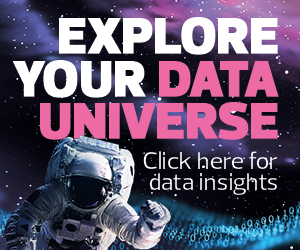Data has become a critical asset for businesses. With the rise of the Internet of Things, social media and other digital technologies, organizations are generating massive amounts of data every day. And more visibility into that data allows organizations to make better decisions.
This is where modern data platforms come in. A modern data platform is a software framework that provides organizations with the tools to collect, process, store and analyze large amounts of data from various sources in real time. While many businesses have found traditional data systems rigid and expensive, a modern data platform makes it easier to manage the volume and variety of data that today’s organizations need.
These platforms can be used across industries such as finance, retail and manufacturing. They can also turn data into valuable insights, improve customer experiences and increase revenue.
Why Data for Everyone Is Advantageous for Businesses
Traditionally, data analysis was only for trained professionals such as data scientists and business analysts. Now, with the rise of self-service analytics tools, people at all levels of an organization can perform basic data analysis and make data-driven decisions.
“It puts the technology into the hands of the users who need it most,” explains Raymond Huo, senior research analyst at IDC.
“This is easily the biggest change yet to hit corporate America,” says Joe Caserta, a partner at McKinsey. “We have this new technology, but now we need to implement it properly. We need to have very deliberate change management at the enterprise level for it to work.”
Organizations must manage open data access so that employees feel comfortable using it. “With any change, there are the folks who are excited and the ones who are grieving the loss of the familiar. IT leaders will need to manage that divide and make everyone feel safe,” Caserta says.
Click the banner below to learn how a modern data platform supports smart decision making.
What Are the Benefits of Open Access to Data?
Modern data platforms have many benefits for businesses. Here’s what IT leaders should know:
Improved decision-making: By empowering all employees to become data analysts, they can make informed decisions rather than relying on guesswork.
Mangesh Pimpalkhare, vice president of product management at Splunk, says open access to data “can empower decision-makers at any level by giving them access to richer business context so they can make more effective and strategic decisions in real time.”
Faster insights: With self-service analytics tools, people can analyze their own data.
Greater efficiency: Modern data platforms can automatically detect anomalies, enabling employees to “respond faster in the event of an unforeseen incident,” Pimpalkhare notes.
Cost savings: By reducing the number of data scientists they need, organizations can save on labor costs.
How to Set Up Everyday Data Analysts for Success
The success of a modern data platform also depends on the analysts using it. “In any large organization, you have a range of employees. Not all are data literate or even tech savvy, and not all may be ready for it,” says Boris Evelson, vice president and principal analyst at Forrester.
Luckily, training lowers the barrier to entry. And once familiar, anyone can use these platforms, Huo explains.
Educating employees on the business value can also help. This starts with using accessible language rather than tech jargon. “We’ve invested millions of dollars in these modern data platforms,” Caserta says. “Now, we have to help people understand it so they want to use it.”
IT leaders should also encourage collaboration. In fact, the ideal scenario is that the “citizen data analyst should complement the expert data analyst,” Huo says.
The path forward has its challenges, but organizations can succeed with strong leadership. Experts like Huo believe it’s only a matter of time before modern data platforms catch on. “The technology is still immature, but in the next five years you’ll see more organizations using it,” he says.
UP NEXT: How to determine what kind of data center is right for your organization.












